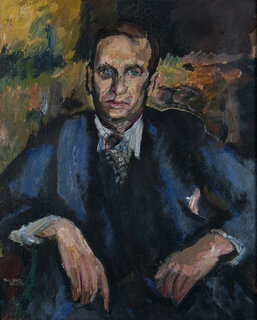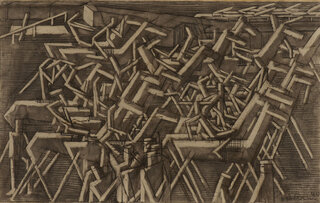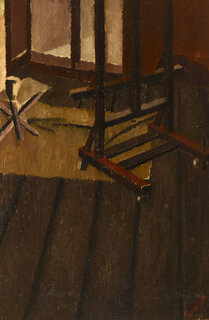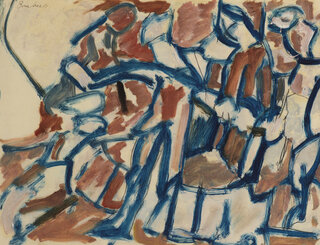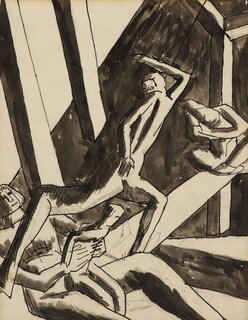
© Erna Nonnenmacher estate
Before marriage to fellow artist, Herman Nonnenmacher, in 1919, Erna studied at the progressive, liberal Reimann Schule in Berlin, the Kunstgewerbeschule for Art and Crafts, and the Technical School for Ceramics in Brunzlau. Employed by the prestigious Rosenthal porcelain factory as modeller, and at Fraureuth as a sculptress, she and Herman shared a studio that had previously belonged to Bauhaus 'master' Lionel Feininger. After emigrating to England - Erna, Jewish; Herman, gentile - both were interned; Erna, first in Holloway prison, then in Rushen women's camp on the Isle of Man, while Herman was held in Onchan. In September 1940 the Jewish Chronicle published 'Forty Artists Interned', railing against the 'unimaginative stupidity' of the internment of artists, noting that "Mr and Mrs Nonnenmacher" were "languishing behind barbed wire" alongside "Johnny [sic] Heartfield", "Fred Uhlmann", "Martin Bloch" and "Ludwig Meidner". Only one artwork remains from Erna's internment - a ceramic tile depicting a prehistoric carved stone on the Calf of Man island, now in the collection of Manx National Heritage,
along with her identity card, listing the dates of her various internment tribunals. Post- internment Hermann and Erna set up a studio at 49 Hornsey Lane Gardens, where they were sustained by a network of fellow former internees; the daughter of Charles Lahr, émigré anarchist, publisher and owner of the Progressive Bookshop in Holborn, recalled 'Occasionally, we visit Herman Nonnenmacher, also on my father's list, and his wife […] the ground floor of their Archway house forms one large studio in which stand figures emerging from the stone. […] They are childless and the stone people to which their hands give birth are more to them than flesh and blood.' Both also participated in the November 1941 joint AIA FGLC exhibition of Sculpture and Drawing, with a foreword by Herbert Read which declared: 'Only in its tri-dimensional world does art attain its completeness', acknowledging that artists 'have been uprooted, deprived of their studios, their materials, their very tools. They work tentatively with great difficulty without adequate economic support in their exile. But even so they represent a tradition of which we in England know too little.' In the postwar period, both became ceramics' tutors at Morley College for Adult Education, which employed a number of émigrés.
